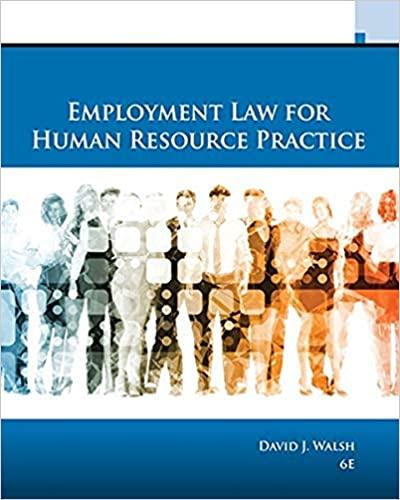Boeing had a policy restricting the use of camera-enabled devices such as cell phones on its property.
Question:
Boeing had a policy restricting the use of camera-enabled devices such as cell phones on its property. Boeing’s “no-camera” rule does not explicitly restrict activity protected by Section 7 of the NLRA, it was not adopted in response to NLRA-protected activity, and it has not been applied to restrict such activity. Nevertheless, applying prong one of the test set forth in Lutheran Heritage, the NLRB administrative law judge (ALJ) found that Boeing’s maintenance of this rule violated the NLRA. The ALJ reasoned that employees “would reasonably construe” the rule to prohibit Section 7 activity, and so it was deemed to be in violation of the Act. Boeing appealed.
1. What were the legal issues in this case? What did the NLRB decide?
2. What is the new rule or standard announced in this decision? To which situations does it apply? How does the new rule differ from the previous rule (the “Lutheran Heritage standard”)?
3. In which ways might a “no-camera” policy like Boeing’s interfere with protected activity under the NLRA? Why does the NLRB conclude that Boeing’s policy does not violate the NLRA?
4. What about other types of workplace conduct policies, such as broad “civility” or “harmonious relationships” policies? Should these be designated as “Category 1” rules whose existence will always be lawful under the NLRA? Why or why not?
5. Would it make more sense for the NLRB and courts to focus on whether policies have actually been enforced in ways that interfere with activities protected by the NLRA, rather than on the potential for policies to do so? Why or why not?
Step by Step Answer:






